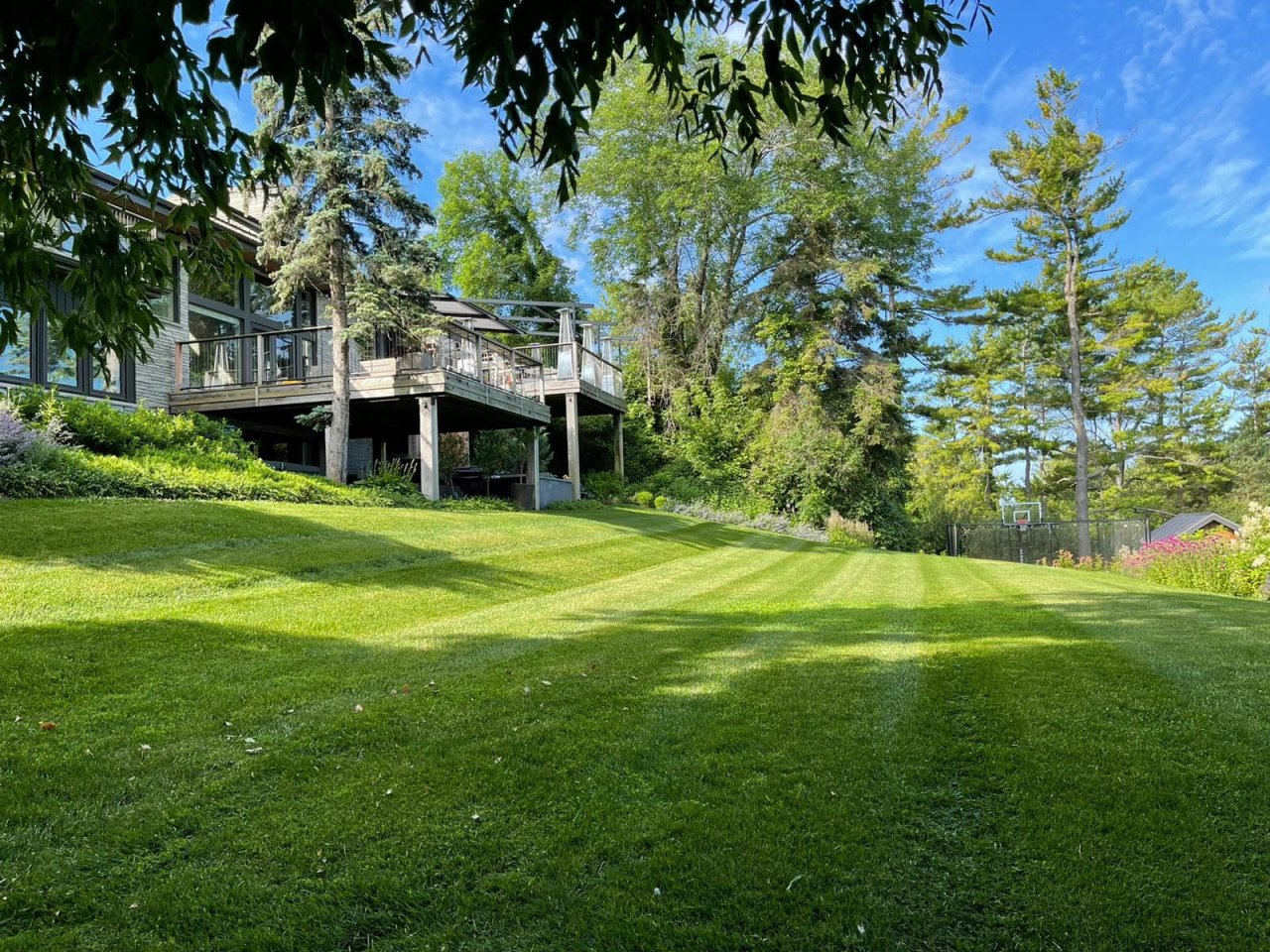Blog
Spring Lawn Care

Spring Lawn Rejuvenation:
As the days lengthen and the soil warms, our lawns start to spring back to life. They’re often beaten up after the snow melts, frequently showing signs of snow mold damage and a lack of nutrients to have them turf jump start quickly. There are a few simple tasks, which if completed in a timely manner, will have lawns quickly looking full and healthy.
1. Fertilizing:
It’s important to provide lawns with an early source of nitrogen as soon as they start to grow in the spring. Nitrogen, used to provide leaf growth, is lost several ways from the root zone. It dissolves quickly in water, and can easily travel through the soil column out of range of the roots. It also dissolves into the atmosphere, where it likewise cannot be used. Applying a high nitrogen fertilizer such as Scott’s Turf-Builder 32-0-4 will focus the turf’s growth towards leaf production. An abundance of leaf growth in the spring provides increased surface for photosynthesis, & more energy production for the plant.
2. Topdressing:
Uneven lawns are best levelled by topdressing with a soil/sand mixture (20% soil/80% sand). Applying a thin layer of the topdressing blend allows the existing soil to grow through so the lawn is not starting from scratch. This process can be repeated after the lawn is re-established if a significantly low area needs to be raised.
3. Overseeding:
Overseeding will thicken a lawn, and is best done in the spring or early September. The quality of a lawn can be improved by using improved or more suitable turf species. Seeding is best applied over topdressing, or through slit-seeding. This method will plant the seeds directly into the soil, providing conditions favourable for germination. Throughout the germination process, seeded areas need to be kept moist but not overly wet. Turf species germinate within different timeframes.
Ryegrass will typically show after 5-7 days
Fescue germinates between 7-14 days
Bluegrass starts to grow in 21-28 days
4. Aeration:
Compacted areas will benefit from aeration, which allows the soil particles to spread out and reduce their density. This allows oxygen to reach the root zone, as well as permitting water to flow more easily through the soil column. Core aeration (also called plug aeration) has the greatest benefits. It removes a core of soil, reducing the density, and providing a small amount of topdressing as the soil plugs loosen and settle over the lawn.
5. De-Thatching:
If excessive clippings have built up to an extent that they cover the soil at the base of the turf, the lawn may benefit from de-thatching. This heavy raking will remove this material, allowing sunlight, water and nutrients to be more readily available to the turf. Leaving grass clipping on the lawn is an excellent way of feeding it, as they return nutrients to the soil as they decompose. Cut lawn to reduce no more than 1/3 of the leaf.
Rolling: Light rolling can be performed to help level a lawn, but can have very negative effects on the soil by compressing it and reducing the voids between the soil particles. Topdressing is a much preferred method of levelling a lawn.
Posted: May 24th, 2023
View More Posts